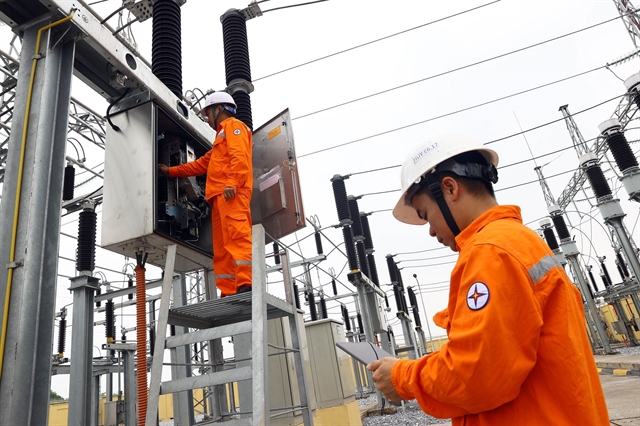The plan aims to fully meet domestic electricity demand, supporting national socio-economic development with an average annual GDP growth rate of around 10 per cent from 2026 to 2030, and 7.5 per cent from 2031 to 2050.

HÀ NỘI — Deputy Prime Minister Bùi Thanh Sơn has signed Decision No. 768/QĐ-TTg approving adjustments to Việt Nam’s National Power Development Plan for the 2021-30 period, with a vision to 2050 (Power Development Plan VIII).
The plan aims to fully meet domestic electricity demand, supporting national socio-economic development with an average annual GDP growth rate of around 10 per cent from 2026 to 2030, and 7.5 per cent from 2031 to 2050.
Commercial electricity is estimated at 500.4-557.8 billion kWh by 2030, with an orientation toward 1,237.7-1,375.1 billion kWh by 2050.
Electricity generation and imports are targeted at 560.4-624.6 billion kWh in 2030 and 1,360.1-1,511.1 billion kWh in 2050.
Peak capacity is expected to reach 89,655-99,934MW by 2030 and 205,732-228,570MW by 2050.
By 2030, Việt Nam strives to have 50 per cent of public buildings and 50 per cent of households using self-produced and self-consumed rooftop solar power (serving on-site consumption, not selling to the national grid).
For an equitable energy transition, renewable energy sources (excluding hydropower) will account for 28-36 per cent of electricity production by 2030, with a target of 74-75 per cent by 2050. A smart, secure and efficient grid system will be developed to handle large-scale renewable energy integration.
By 2030, Việt Nam also plans to establish two inter-regional renewable energy industrial and service centres.
These will encompass electricity generation, transmission, and consumption; renewable equipment manufacturing; construction; installation and related services. Potential locations of renewable energy industrial ecosystem include the northern, south central and southern regions, depending on favourable conditions.
Việt Nam will develop renewable and new energy sources for export to Singapore, Malaysia and other regional partners. By 2035, electricity export capacity is expected to reach 5,000-10,000MW. It is possibly more dependent on demand and economic viability while ensuring domestic energy and national security.
Between 2030 and 2035, Ninh Thuận 1 and 2 nuclear power plants will come into operation with a capacity of 4,000-6,400MW.
From 2026 to 2030, the total investment for power sources and transmission grids is estimated at US$136.3 billion, including $118.2 billion for power sources and $18.1 billion for transmission grids.
The orientation of 2031-2035 is the estimated demand for investment capital equivalent to $130 billion. Of which, investment in the power source is about $114.1 billion and the power grid is about $15.9 billion, which will be accurate in subsequent plans.
From 2036 to 2050, total investment is expected to reach $569.1 billion, with $541.2 billion for power sources and $27.9 billion for transmission grids, to be further detailed in subsequent plans. — BIZHUB/VNS





